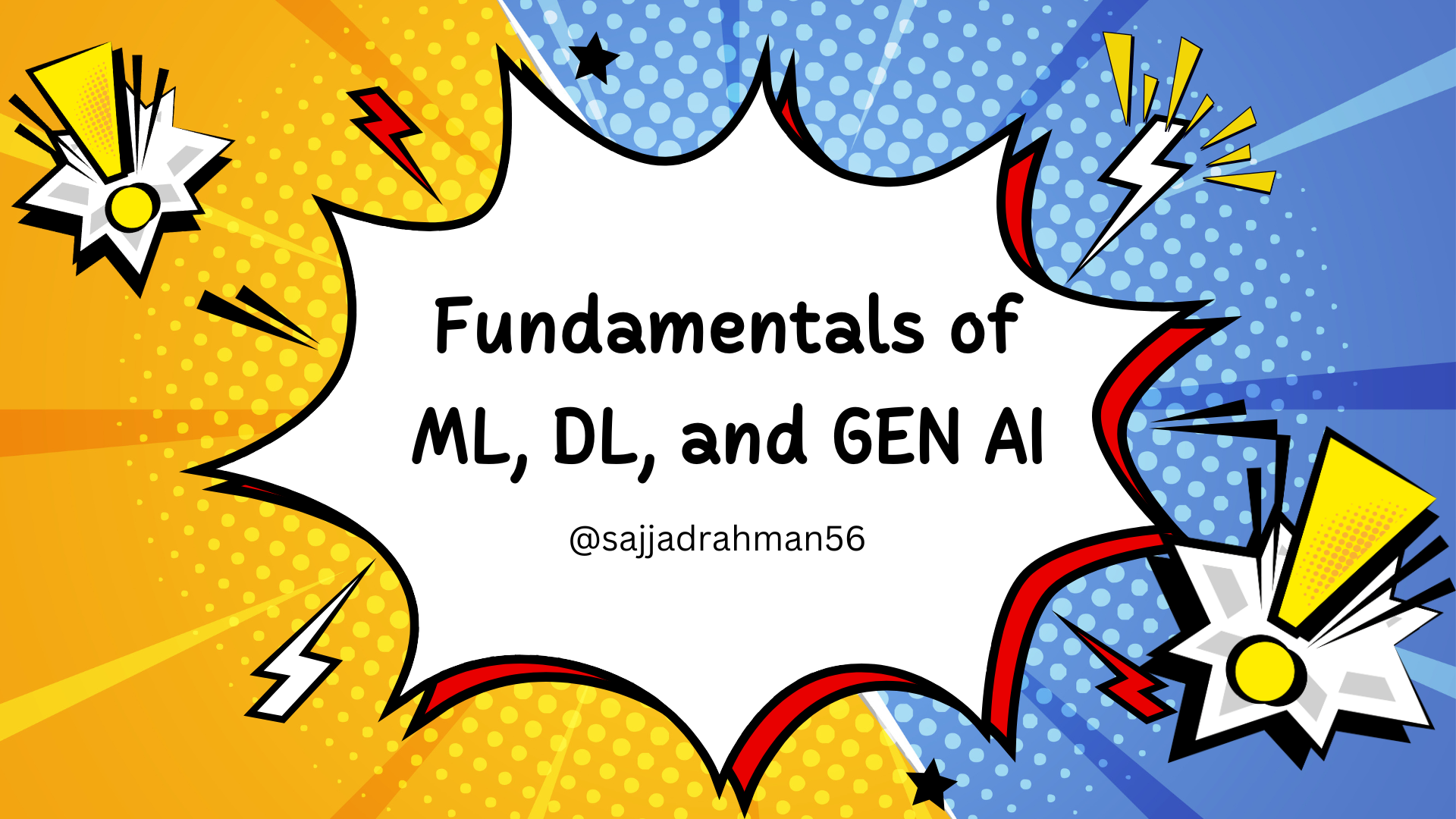Fundamentals of ML, DL, and GEN AI
 Sajjad Rahman
Sajjad Rahman
Introduction
This guide covers the fundamentals of Machine Learning (ML), Deep Learning, and Generative AI, including an overview of foundation models (FMs) and their types. Understanding these areas can aid in preparing for exams like the AWS Certified AI Practitioner (AIF-C01).
1. Machine Learning

Training Data
To build an effective machine learning model, high-quality data is essential. Training data can vary depending on the dataset and problem:
Labeled Data: Each example has a target variable or label, representing the desired outcome or classification.
Unlabeled Data: Data with no associated label, often used for unsupervised learning.
Structured Data: Data stored in rows and columns with a predefined format (e.g., CSV files, time series data).
Unstructured Data: Data without a predefined format (e.g., text, images, audio), often requiring advanced algorithms to analyze.

After gathering data, the next step is selecting a machine-learning algorithm.
ML Model
Machine learning models are commonly divided into three categories:
Supervised Learning: Trained on labeled data to predict outcomes based on new data.
Unsupervised Learning: Trained on unlabeled data to discover patterns or relationships.
Reinforcement Learning: Trained by receiving rewards or penalties based on actions, helping the model improve its decision-making.
Inferencing
The process of using a model to make predictions or decisions is known as inferencing.
Batch Inferencing: Processes large sets of data all at once, focusing more on accuracy than speed.
Real-Time Inferencing: Provides instant responses to new data, crucial for applications like chatbots.
2. Deep Learning
Deep learning is a subset of machine learning that uses neural networks inspired by the human brain.
Neural Networks

Neural networks consist of nodes organized into layers, including an input layer, hidden layers, and an output layer.
Applications
Computer Vision: Enables computers to understand images and videos, supporting tasks like image classification and object detection.
Natural Language Processing (NLP): Focuses on interactions between computers and human language, enabling tasks like sentiment analysis, text generation, and translation.
3. Generative AI
Generative AI creates new content based on existing data or patterns. Generative models, called foundation models (FMs), are trained on large datasets and can handle multiple tasks. FMs also serve as a base for developing specialized models.

Foundation Model (FM) Lifecycle
Data Selection: Large amounts of unlabeled data are collected for pre-training.
Pre-training: FMs use self-supervised learning to understand data relationships without labeled data. Continuous pre-training expands the model's knowledge.
Optimization: Techniques like prompt engineering and fine-tuning refine the model.
Evaluation: Models are tested with metrics and benchmarks to ensure effectiveness.
Deployment: Successful models are integrated into applications or systems.
Feedback and Continuous Improvement: Performance is monitored post-deployment, and feedback guides further tuning or re-training.
Amazon Bedrock provides access to top-performing FMs from leading AI companies, such as AI21 Labs, Anthropic, Cohere, Meta, Mistral AI, Stability AI, and Amazon.
Different Types of Generative Foundation Models (FMs) in AI
Large Language Models (LLMs): Often built on transformer architecture, LLMs are trained on text data to understand and generate human-like language.
Diffusion Models: Generate images by refining noise into clear outputs, widely used in text-to-image generation.
Multimodal Models: Process multiple data types (like text and images) to create content, such as generating captions or graphics from text prompts.
Generative Adversarial Networks (GANs): Use a generator and discriminator network to produce realistic synthetic data.
Variational Autoencoders (VAEs): Compress data into a latent space, then reconstruct it, allowing for the generation of new samples based on learned patterns.
Reference: Standard Exam Prep Plan: AWS Certified AI Practitioner (AIF-C01)
Subscribe to my newsletter
Read articles from Sajjad Rahman directly inside your inbox. Subscribe to the newsletter, and don't miss out.
Written by

Sajjad Rahman
Sajjad Rahman
As a Flutter developer, I am constantly learning and trying to implement new concepts into my projects. In addition, I devote time to studying Machine Learning. I have a passion for contributing to open-source projects.